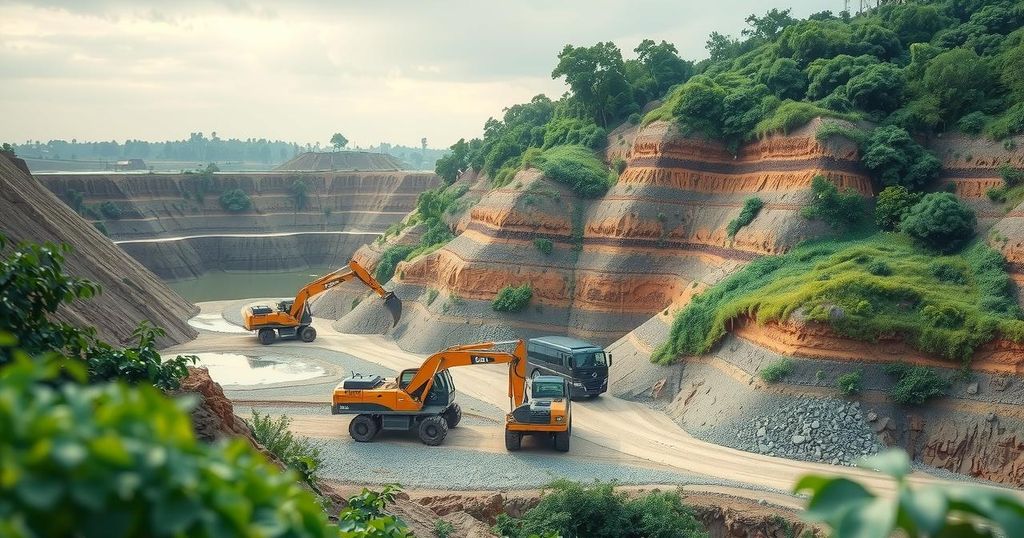Global Rare-Earth Production Shifts Focus from China to the U.S. and Brazil

Countries like the U.S. and Brazil are ramping up rare-earth mining and processing to reduce reliance on China, which dominates the sector. Significant investments are being made, particularly by companies like Aclara Resources. While costs remain high, the environmental focus of new methods offers a competitive edge. Both nations are navigating complex regulations amid rising global demand for rare-earth materials essential for technology and military applications.
The landscape for rare-earth mineral production is shifting, with new plants emerging outside of China, particularly in the U.S. and Brazil. These minerals, essential for electric vehicles and smartphones, are increasingly critical as countries focus on diversifying their supply chains. Notably, many of these rare-earth materials are set to head to the U.S., marking a strategic pivot away from dependency on China.
China currently dominates the rare-earth sector, accounting for around 70% of global mining and a staggering 90% of processing. This imbalance has raised alarms among officials seeking to secure their own supply chains. Ramon Barúa, the CEO of Aclara Resources based in Canada, is among those recognizing the urgency. They are on track to open a rare-earth mine and are deciding on a site for a new processing plant in the U.S. by August.
Aclara has already secured a partnership with VAC, a German firm, that is receiving $94 million in Pentagon funding to produce critical magnets in South Carolina. Barúa remarked on the escalating demand for these materials, highlighting the pressures that have emerged due to geopolitical tensions, especially after recent tariffs between the U.S. and China.
Brazil is also emerging as a key player. With the world’s second-largest rare-earth reserves of 21 million tons, the country holds significant potential. In contrast to complexities in the U.S. market, Brazil possesses a wealth of high-demand metals like dysprosium and terbium. These rare elements help maintain magnet strength at elevated temperatures, making them crucial for electric vehicle technology.
However, Brazil has struggled to capitalize on its rare-earth resources due to challenging regulations and financing hurdles. Mining and processing costs in Brazil are projected to be significantly higher than in China—about three times more expensive. To navigate these challenges, Brazilian officials are now actively mapping deposits and exploring rare-earth traces in mining waste.
Despite obstacles, Brazil made progress last year with its first major rare-earth mine opening near Nova Roma. Aclara’s project will produce essential elements, but most output will go to China—illustrating the continuing complexities in global supply chains.
The U.S. has been reinvesting significantly into its rare-earth processing capabilities, making it a stated priority since the Trump administration declared a national emergency in 2020 due to reliance on foreign minerals. The European Union is likewise working to lessen its dependence on China, establishing ambitious goals for raw material processing within its borders.
Aclara is expected to open a larger plant by 2028 that will partially process rare earths—specifically creating carbonates to be refined further in the U.S. While the company may not compete with China on cost, they promote their mining methods as more environmentally sustainable, which is becoming increasingly important to consumers and regulators alike.
Brazil’s recorded history of mining has issues. Yet, regulations there are stricter than those in China. Aclara’s methods could be less harmful; instead of the excavation techniques from China that use ammonium sulfate, Aclara plans to treat the clay on-site with methods designed to minimize contamination.
Overall, the drive for rare-earth elements from places outside China is gaining momentum, as both the U.S. and Brazil look to develop their capabilities in a highly strategic market.
Emerging rare-earth minerals plants in the U.S. and Brazil represent a critical shift in the global landscape, particularly as countries seek to reduce their dependence on China. With significant investments and partnerships forming, the goal is to bolster domestic production capabilities while ensuring environmentally responsible practices. As demand surges, the focus on sustainability in mining operations could very well define the future of this industry.
Original Source: www.hindustantimes.com







